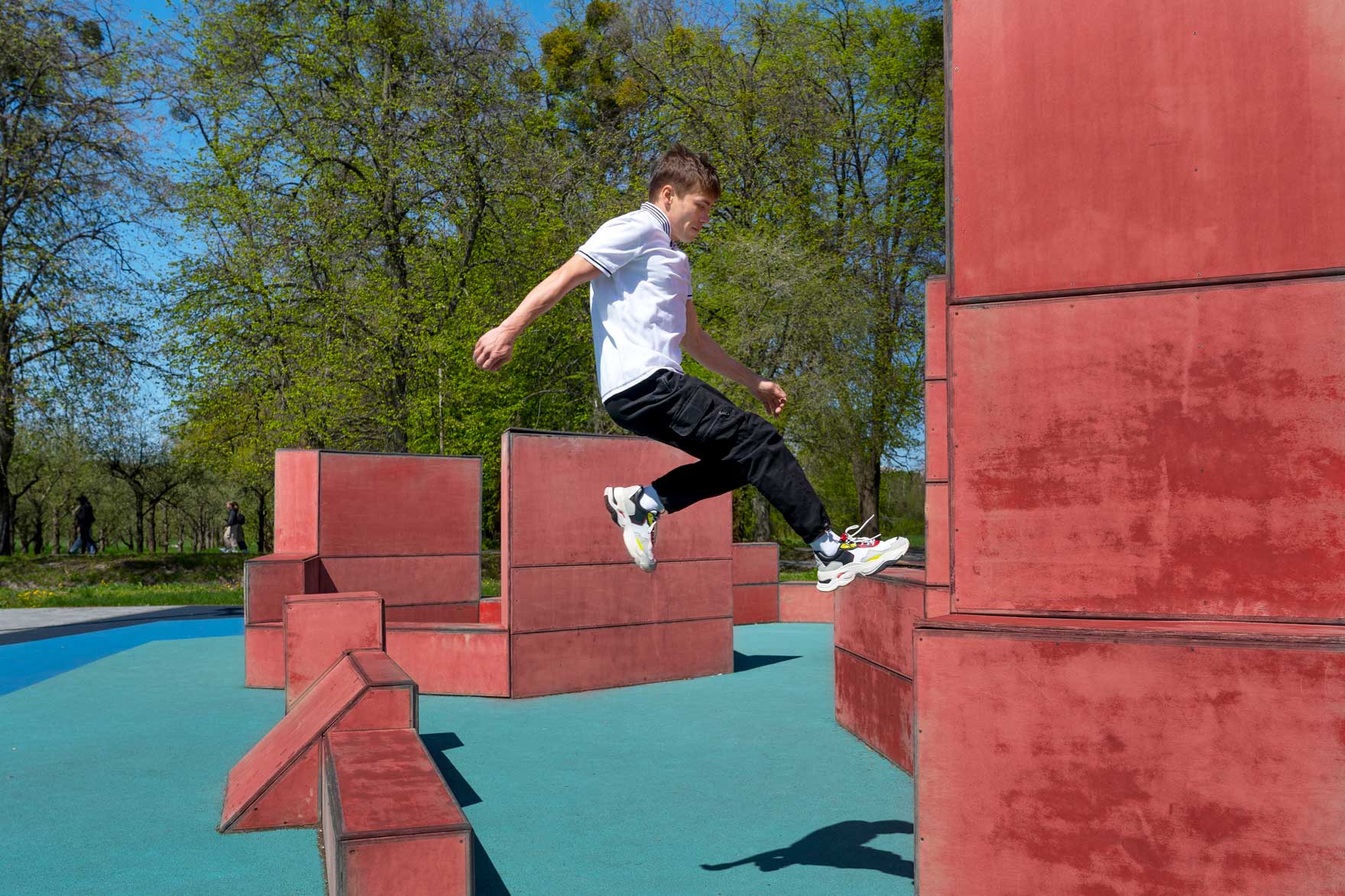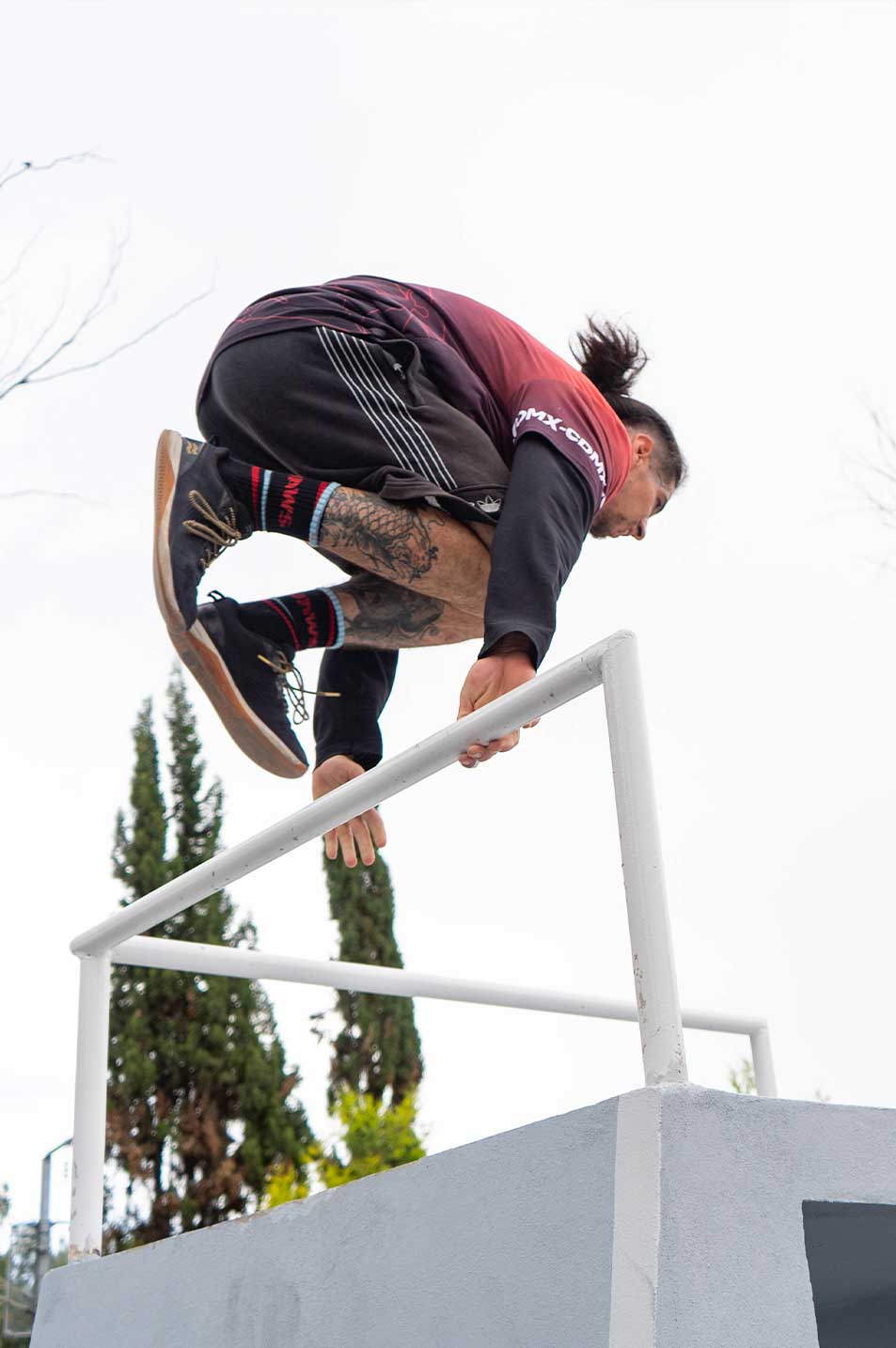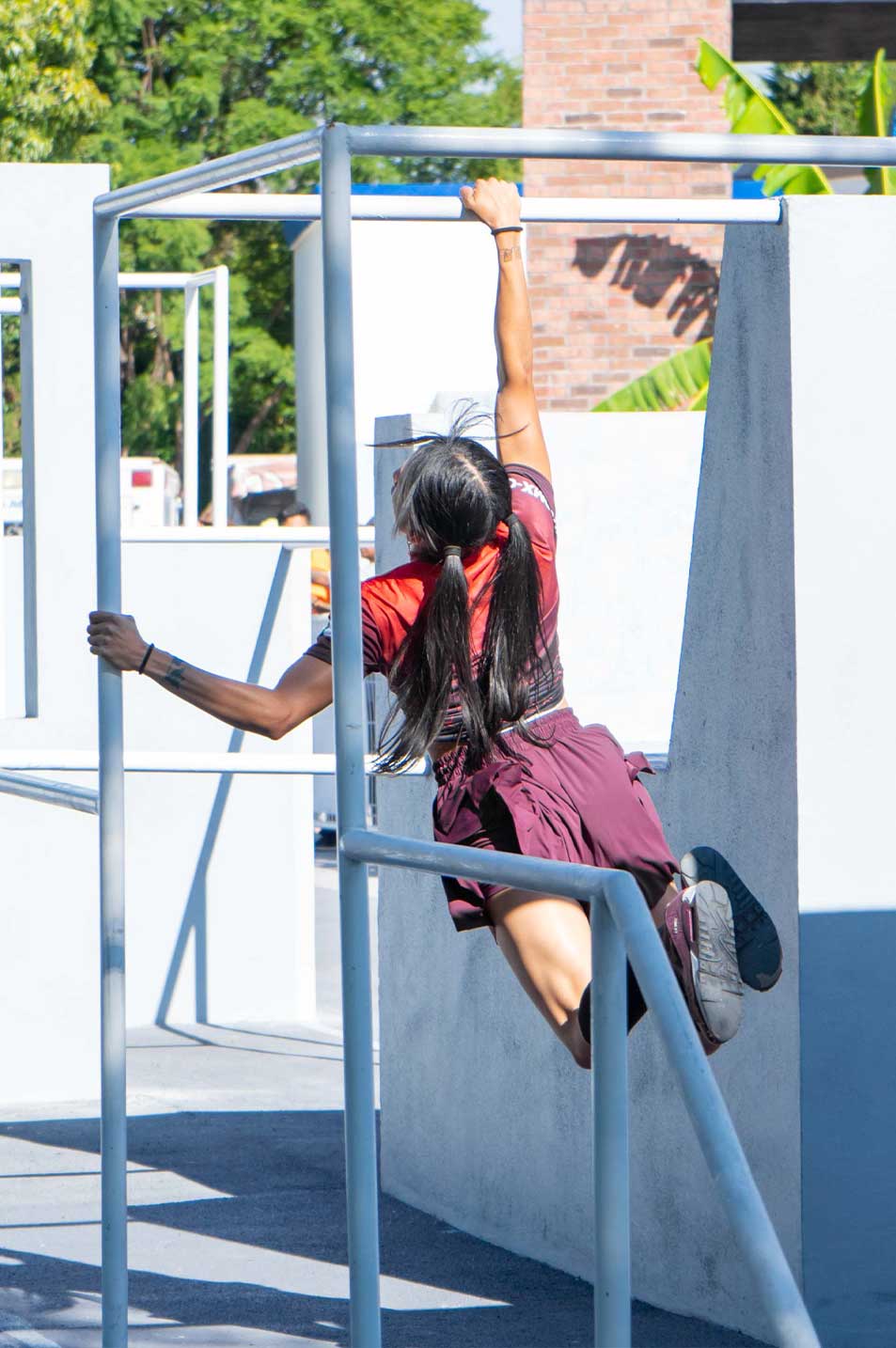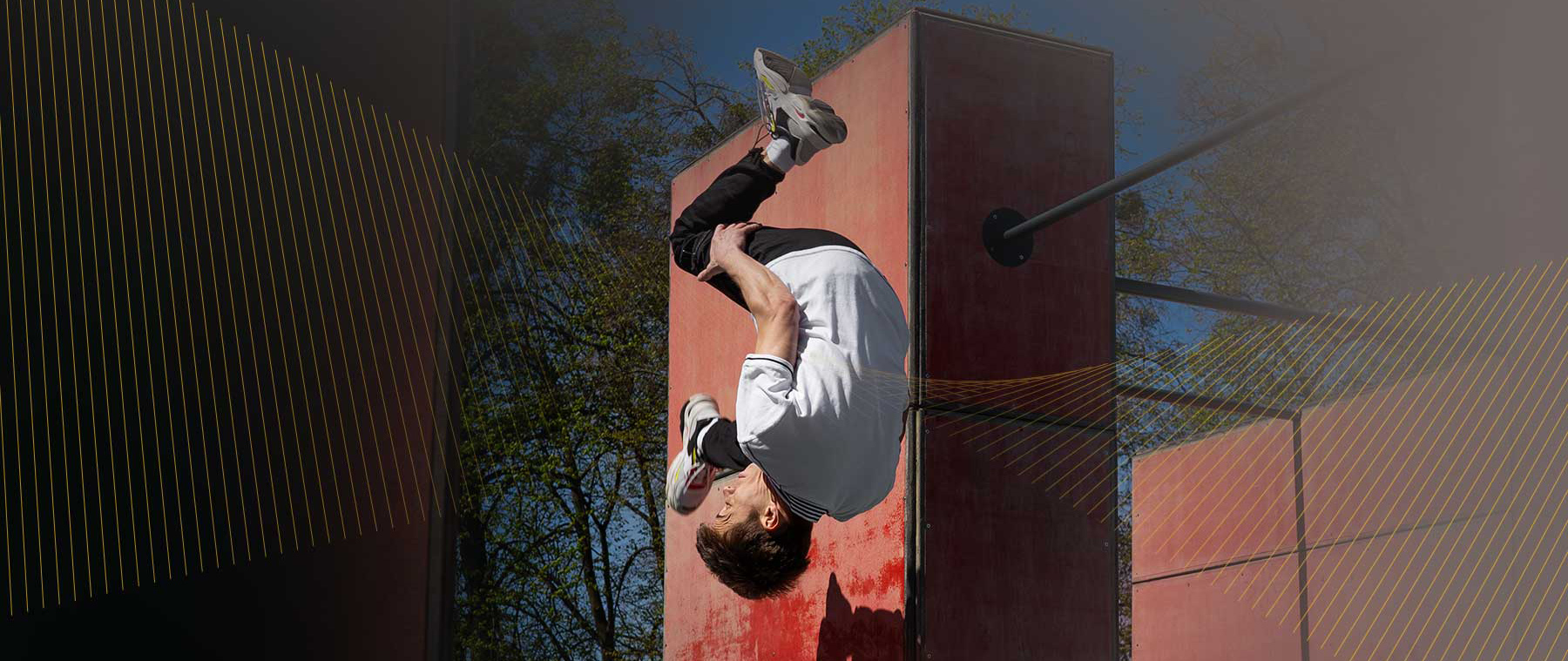Execution: Judges observe how the movements are performed, looking for clear and error-free execution.Rhythm and amplitude: The ability of the athlete to maintain an adequate rhythm and perform movements with amplitude, demonstrating control and mastery, is evaluated.
Connection: The athlete’s ability to fluidly link different movements, showing smooth transitions between them is evaluated.
Fluency: Refers to the ability to chain movements in a fluid manner, maintaining efficiency and rhythm, which demonstrates a good command of technique.
Parts of the competition space: Evaluates the athlete’s ability to perform tricks in different sections of the designated competition space, which shows their adaptability and versatility in different areas of the course.
Types of obstacles used: Evaluates the athlete’s ability to perform tricks involving different types of obstacles, such as the floor, platforms, bars and walls, demonstrating their ability to use the environment in a creative and varied manner.
Difficulty: The level of difficulty of the movements performed is considered, from the simplest to the most complex variants, which shows the technical and physical ability of the athlete.
Trick table: Evaluates the variety and difficulty of tricks performed by the athlete, according to a reference list, adjusting the score based on where the trick is performed and whether it is directly linked to other movements.
Placement: Evaluates the placement of tricks within the run. A trick performed at the beginning, middle and end of the run, which demonstrates the athlete’s ability to maintain consistency and creativity in the execution of the movements throughout the entire run.
Time: Evaluates the length of the run and how it influences the execution of the tricks. The length of the run according to a reference list, reflecting the athlete’s ability to maintain a consistent and effective performance throughout the run.
Variety: Evaluates the variety of tricks performed by the athlete. Classic Parkour, forward rotations, sideways, backwards, twists and turns with fulcrum, which demonstrates the versatility and creativity of the athlete in the execution of the movements.
Technique: This criterion evaluates the technical quality of elements. The technical quality of these elements demonstrates the athlete’s skill and precision in the execution of key movements during the race.







